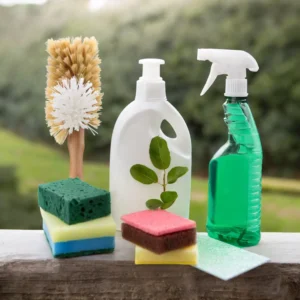Introduction to Flokati Rugs
Flokati rugs are more than just floor coverings—they’re pieces of Greek heritage known for their thick, luxurious wool and distinctive look. Over time, these rugs can lose their original shape or start to wear out, making proper care essential. One key to maintaining their quality is strong, durable lacing. Choosing the right thread for lacing is crucial for preserving the rug’s beauty and durability. In this guide, we’ll dive into the best thread options for lacing Flokati rugs, ensuring they stay as stunning as the day you got them. Ready to learn more? Let’s get started.
The History and Characteristics of Flokati Rugs
Origins and Traditional Features
Flokati rugs, originating from the mountainous regions of Greece, have a rich history dating back to the 5th century. They were traditionally handwoven by shepherds using pure sheep’s wool, symbolizing warmth and comfort. Flokati rugs were initially created as heavy, thick blankets for protection against the harsh winter climate.
What makes Flokati rugs unique is the process of “fulling.” This is a traditional method where the wool is repeatedly washed in cold river water, causing the fibers to expand and bloom, giving Flokati its distinct fluffy and shaggy appearance. The authentic look of a Flokati rug is defined by its soft, long pile (up to 5 inches in some cases), and a dense, plush texture. These rugs are typically left in their natural creamy white color, although they can also be dyed in various hues.
Key Characteristics of Flokati Rugs:
- 100% Wool Construction: Authentic Flokati rugs are made entirely from sheep’s wool, contributing to their softness and durability.
- Shaggy Texture: The deep, shaggy pile gives them a unique look and a cozy feel, making them perfect for adding warmth to a room.
Natural Resilience: Wool fibers naturally repel dirt and resist stains, enhancing the longevity of Flokati rugs.
Why Lacing Matters for Flokati Rugs:
Lacing is an essential technique for securing and maintaining the structure of Flokati rugs, especially around the edges. Without proper lacing, the rug can lose its shape, and the pile may start to unravel, diminishing its beauty and lifespan.
Benefits of Lacing:
- Enhanced Durability: Proper lacing prevents the rug’s edges from fraying, making it more durable.
- Aesthetic Appeal: A neatly laced rug looks polished and well-maintained, enhancing the overall appearance of the Flokati.
- Improved Shape Retention: Lacing helps the rug maintain its original shape, even after heavy use or washing.

Types of Thread for Lacing Flokati Rugs:
Choosing the right thread for lacing is crucial to ensure a secure and lasting finish. Threads can be broadly classified into two categories:
- Natural Threads:
- Wool Thread: The most traditional choice, wool thread complements the natural fibers of the Flokati rug. It blends seamlessly and maintains the rug’s authentic look.
- Cotton Thread: Soft and flexible, cotton thread is another natural option. It’s gentle on the wool fibers and provides a secure hold.
- Synthetic Threads:
- Nylon Thread: Known for its strength and durability, nylon thread is a popular choice for lacing. It resists wear and tear, making it suitable for rugs that undergo heavy usage.
Polyester Thread: Polyester thread is strong and has good elasticity, providing a sturdy hold while maintaining flexibility.
Popular Thread Options for Lacing Flokati Rugs:
Here’s a comparison of some common thread options:
- Polyester Thread:
- Pros: High strength, good elasticity, resists abrasion.
- Cons: Can be slightly visible on natural wool if not color-matched.
- Best For: High-traffic areas where durability is key.
- Waxed Cotton Thread:
- Pros: Strong hold, easy to work with, provides a secure finish.
- Cons: May lose strength over time if exposed to moisture.
- Best For: Vintage or traditional Flokati rugs requiring a natural touch.
- Nylon Thread:
- Pros: Extremely durable, resists stretching and fraying.
- Cons: Less flexible, may not blend well with the rug’s natural fibers.
- Best For: Heavy-duty lacing, particularly for rugs exposed to frequent foot traffic.
Key Factors for Selecting the Right Thread:
When choosing the best thread for lacing your Flokati rug, consider these essential factors:
- Thread Strength: Ensure the thread can withstand the weight and movement of the rug without breaking.
- Color Matching: Select a thread color that closely matches the rug to maintain a seamless appearance.
- Durability: Choose a thread that can handle washing and regular use without weakening.
Flexibility: The thread should have some elasticity to accommodate the rug’s natural movement and stretching.
Step-by-Step Guide to Lacing Your Flokati Rug:
Follow these steps to lace your Flokati rug effectively:
Gather Materials:
- Thread of your choice
- Large upholstery needle
- Scissors
- Tape measure
Prepare the Rug:
- Lay the rug flat on a clean surface.
- Trim any loose fibers or frayed edges.
Start Lacing:
- Thread the needle with a long piece of your chosen thread.
- Begin at one corner, inserting the needle from underneath the edge.
- Use a blanket stitch or whip stitch, ensuring each stitch is tight and evenly spaced.
Finish the Edges:
- Continue stitching until you reach the end of the edge.
- Knot the thread securely and trim any excess.

Tools You’ll Need for Lacing Flokati Rugs:
To make the lacing process easier, have these tools ready:
- Upholstery Needle: A large, sturdy needle is essential for threading through thick wool.
- Scissors: Sharp scissors help trim the thread and any loose fibers.
- Measuring Tape: Useful for ensuring consistent stitch spacing.
- Thimble: Protects your fingers while pushing the needle through tough sections.
Maintenance Tips for Laced Flokati Rugs:
Proper maintenance can significantly extend the life of your laced Flokati rug:
- Regular Cleaning: Shake the rug outside to remove dirt and debris. Avoid vacuuming directly on the pile to prevent damage.
- Spot Cleaning: Use a mild detergent and cold water for spot cleaning. Gently blot the area with a soft cloth.
- Avoid Moisture: Excessive moisture can weaken both the wool fibers and the thread, so keep the rug dry as much as possible.
- Inspect Lacing: Periodically check the lacing for any signs of wear or loosening. Re-lace if necessary to maintain a neat finish.
Conclusion: Enhancing the Longevity of Your Flokati Rug
A well-laced Flokati rug not only looks elegant but also stands the test of time. By choosing the right thread, following proper lacing techniques, and maintaining your rug, you can ensure it remains a beautiful and functional addition to your home for many years. Whether you opt for traditional wool thread or a durable synthetic option, the right lacing can transform your Flokati rug into a lasting heirloom piece.








